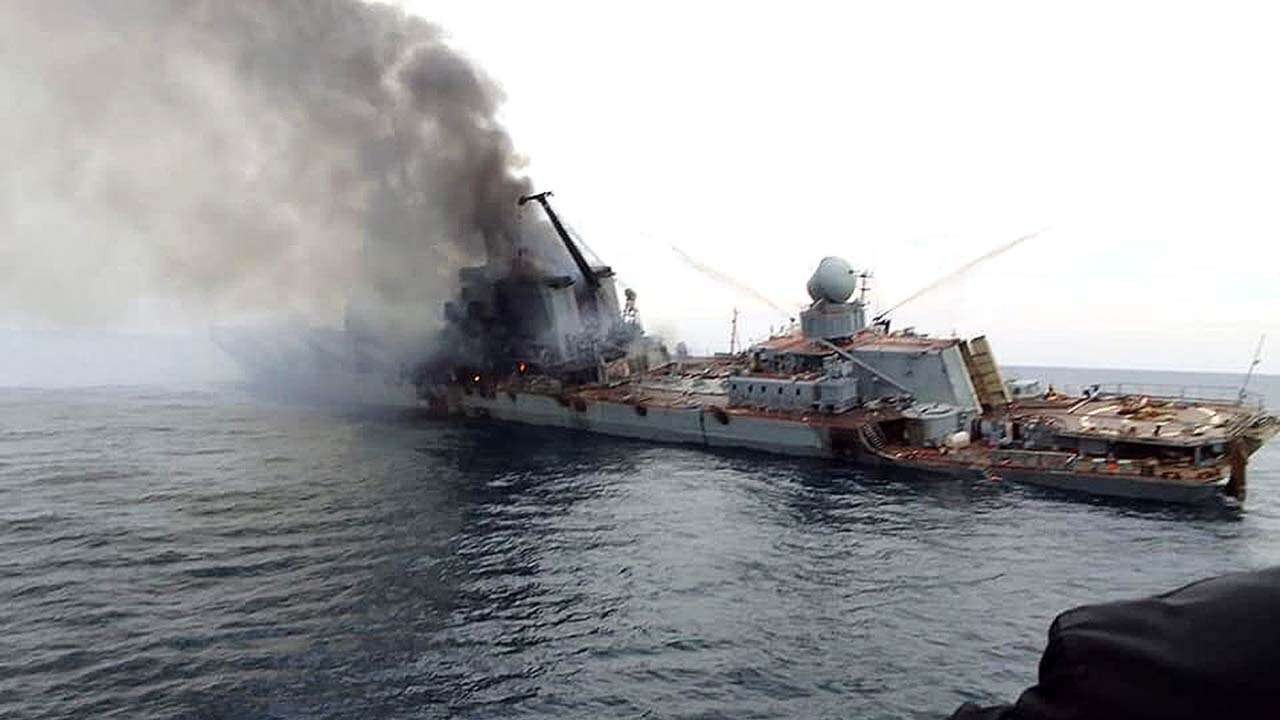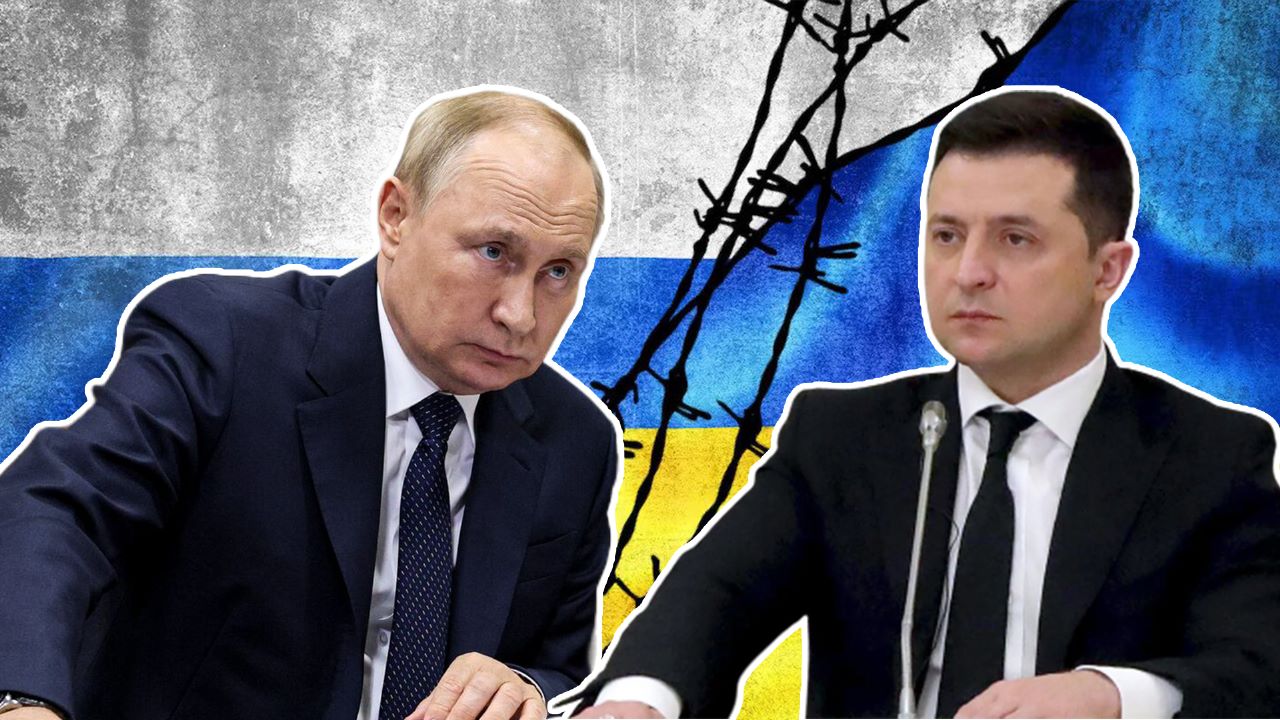The Ukrainian Ministry of Defense and Armed Forces commemorated the second anniversary of their historic victory against Russia: the day they fired two Neptune anti-ship cruise missiles at the Russian flagship cruiser Moskva, causing the ship to sink.
The Ukrainian Ministry of Defense said: “Two years ago, Ukrainian warriors destroyed the largest warship of the Russian Black Sea Fleet: cruiser Moskva. The Ukrainian military struck the Russian cruiser with Neptune cruise missiles in the area of Snake Island and inflicted serious damage on it. The cruiser sank while being towed to its port of destination. The most important question is: How is Moskva at the bottom of the Black Sea?”
On April 13, 2022, the 11,490-ton SLAVA Class cruiser built in the Soviet Union, the Moskva, went down shortly after being heavily damaged by two Ukrainian Neptune coastal anti-ship cruise missiles. Although there were speculations that the US had helped with the strike, Ukraine said its forces independently located and identified Moskva in the Black Sea without any external assistance.
Russia was compelled to confirm on April 14 that the “Moskva” had sunk. The Russian Federation stated that the sinking happened as a result of the cruiser being enveloped in a storm and fire, which prevented it from ever returning to port.
Coming in the aftermath of some swift gains made by the Russian forces, the sinking of the Russian cruiser was touted as revenge by Ukraine for the Russian takeover of Snake Island. This was because Moskva had been instrumental in capturing Snake Island by Russian troops, giving the rest of Russia’s Black Sea fleet, which included 20 or more warships and submarines, the ability to defend itself from the air and the sea.
Two years ago, Ukrainian warriors destroyed the largest warship of the russian Black Sea Fleet—cruiser Moskva.
The Ukrainian military struck the russian cruiser with Neptune cruise missiles in the area of Snake Island and inflicted serious damage on it. The cruiser sank while… pic.twitter.com/r2KbhYsaXS— Defense of Ukraine (@DefenceU) April 14, 2024
In an interview with the Ukrainian news outlet Novosti, on April 13, marking the second anniversary of the sinking, Ukrainian Navy spokesman Dmytro Pletenchuk finally provided specifics of the painstakingly planned operation, two years after the Russian Black Sea Fleet’s flagship, the cruiser Moskva, was destroyed.
“Of course, luck is always an important element, but clear planning of the combat operation, patience, and monitoring have brought results. When our naval command saw the opportunity to destroy the flagship, we were ready for it,” he said while emphasizing that the Russian forces were unprepared for the attack. “They didn’t even suspect that we have our cruise missile and that we can even carry out a fire strike.”
The sinking of the "Moskva" is not just a military victory – it is a hymn to 🇺🇦 heroism, the triumph of the "Neptune" – a formidable weapon created by 🇺🇦 mind pic.twitter.com/gRbMJ6c3Lh
— CHB (@KirilHB) April 13, 2024
The spokesperson noted that the day of the attack was gloomy and wet, which was of advantage to Ukraine and contributed significantly to the sinking of the flagship. The ship lost a significant portion of its command personnel when the first missile struck.
“The crew could no longer receive the appropriate orders, and they did not act on their initiative, so, of course, they lost the ship. In addition, judging by the events that accompanied this operation, the enemy (ship) was moving slowly. That is, the occupiers were not even afraid and, in their imperial ambitions, believed that they were on a so-called ‘aircraft carrier killer’ and were untouchable.”
Neptune bids the cruiser "moskva" farewell.
🖌️ by Andriy Dankovych pic.twitter.com/teYRmINRYD
— Defense of Ukraine (@DefenceU) April 14, 2023
The operation was completed in less than an hour. The three tiers of air defense that the Russians possess, according to Pletenchuk, were not even fully used as the three air defense systems on board the ship were all “silent.” “It looked as if there were empty posts. That’s why this Russian “maybe it will work out” (a saying) has once again worked against” them.
As per some other accounts, the ship was transformed into a blazing skeleton as the S-300 Fort, 9K33 Osa, and AK-630 artillery systems’ potent ammo exploded. No air defense systems were in use on the cruiser. After the missiles struck, there was an orderly evacuation and an uncoordinated battle for the ship’s survival. However, anarchy prevailed. Only a few people were able to use the life rafts that were tossed into the water.

The sinking of the Russian flagship became a symbol of resistance for Ukraine’s armed forces that were preventing the march of Russian troops from occupying their territories in a bloody onslaught.
The Ukrainians have carried out many successful attacks after that on the Russian Black Sea Fleet, which is headquartered in Crimea. However, the destruction of the Moskva is still hailed as a watershed moment for the Ukrainian military.
The Russians have now accused the United Kingdom of assisting Ukraine in carrying out the majority of attacks in Crimea.
Russia Points Fingers At Britain Again
In a little more than two years of conflict, the Ukrainian navy claims to have sunk or disabled one-third of all Russian warships in the Black Sea. This was claimed by Ukraine’s Navy spokesman Dmytro Pletenchuk after a strike last month that hit the Russian amphibious landing ship, Kostiantyn Olshansky, that was in the dock in Sevastopol in Russia-occupied Crimea.
Russia claims that the UK may have been working in tandem with Ukraine. The “vast majority” of Ukraine’s attacks in Crimea, according to Russia’s Federal Security Service (FSB), were made possible by the United Kingdom.
A Russian intelligence officer stated in a video statement released by the FSB recently that the agency “has regularly received information about the participation of Western intelligence services, primarily British, in the training of Ukrainian special forces.”

According to a report by the Russian state-operated news outlet Tass, the Kremlin office stated, “We have established the supervisory role of British special forces in the vast majority of terrorist and sabotage actions against ships of the Russian Black Sea Fleet and the Crimean Peninsula. The FSB provided no proof for any of these claims.
In recent months, Ukraine has increased its operations against Russia’s Black Sea Fleet and Crimea, significantly weakening Moscow’s naval forces positioned near the peninsula.
Apart from the Russian navy, Ukraine has launched attacks against critical military installations in Crimea. This acted as a springboard for Moscow’s full-scale invasion in February 2022.
The Kerch Bridge, which links Crimea to Russia’s mainland, for instance, has also been targeted by Ukraine. Traffic and supplies have been halted twice by Kyiv’s attacks on the bridge, and a military intelligence report from earlier this month hinted at a third attack in the “first half of 2024.”
- Contact the author at sakshi.tiwari9555(at)gmail.com
- Follow EurAsian Times on Google News




